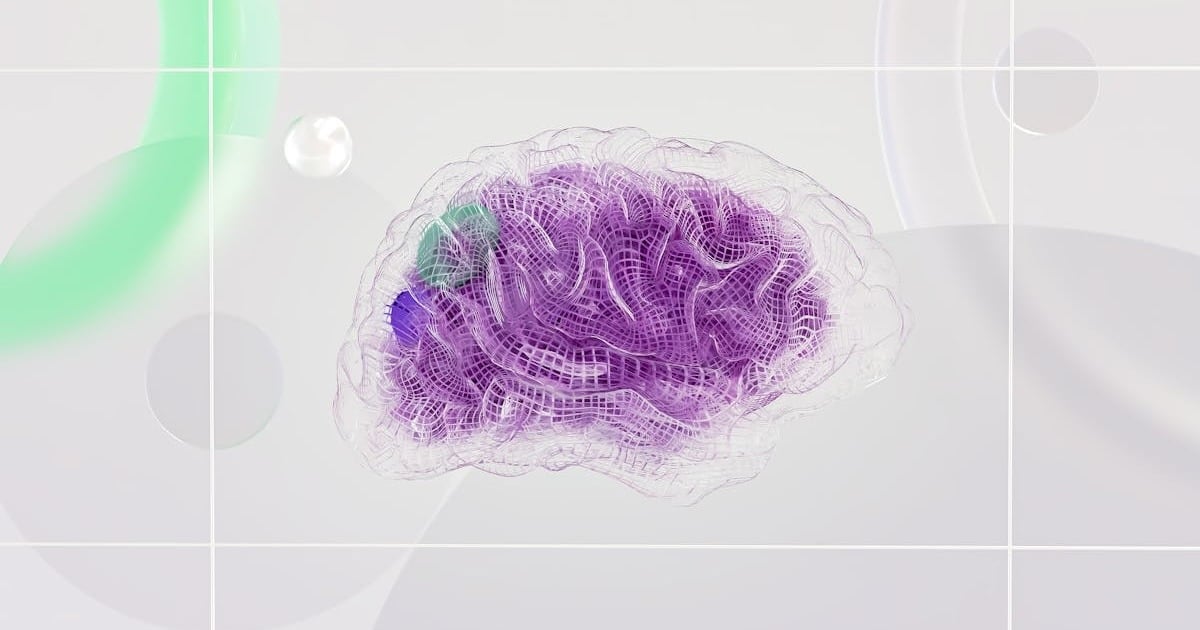Self-Supervised AI: Advancing Machine Learning Through Autonomous Data Interpretation

The power of self-supervised learning lies in its ability to leverage vast amounts of unlabeled data that exists in the world. By predicting missing parts of the input or solving pretext tasks like rotating images or filling in blanks in text, these systems develop rich internal representations. This pre-training phase builds a foundation of knowledge that can later be fine-tuned for specific applications with minimal labeled examples.
Self-supervised methods are driving breakthroughs across multiple domains of artificial intelligence. In computer vision, models learn visual representations by reconstructing images or predicting relationships between image patches. In natural language processing, systems predict missing words or understand sentence relationships without explicit labels. These techniques are closing the gap between human and machine learning efficiency.
Key Takeaways
- Self-supervised learning enables AI to learn from unlabeled data by creating its own training signals, reducing dependency on human annotation.
- The approach works by having models solve pretext tasks like predicting missing parts of input data, which builds robust internal representations.
- Self-supervised methods are advancing AI applications across domains including computer vision and natural language processing with greater data efficiency.
Understanding Self-Supervised Learning
Self-supervised learning represents a significant advancement in how AI systems learn from data. This approach bridges the gap between supervised and unsupervised learning by enabling models to generate their own training signals from unlabeled data.
Definition and Overview
Self-supervised learning (SSL) is a machine learning technique where models learn from unlabeled data by generating supervision signals from the data itself. Unlike traditional methods, SSL creates its own "labels" by hiding part of the input and training the model to predict this hidden information.
For example, a common SSL task might involve masking words in a sentence and asking the model to predict the missing words. Another approach might separate an image into patches and ask the model to arrange them in the correct order.
The key innovation of SSL lies in its ability to extract meaningful patterns and representations from raw, unlabeled data. This approach is particularly valuable because unlabeled data is abundant and inexpensive to collect compared to manually labeled datasets.
Comparison with Supervised Learning
Supervised learning requires labeled data where inputs are paired with correct outputs. A model learns to map inputs to these predetermined labels through training. While effective, this approach depends on expensive and time-consuming human annotation.
Self-supervised learning eliminates this dependency by deriving training signals from the data itself. Instead of human-provided labels, SSL uses various pretext tasks that don't require external annotation.
The primary differences include:
- Data requirements: Supervised learning needs labeled datasets, while SSL works with unlabeled data
- Scalability: SSL can leverage much larger datasets since it doesn't require manual labeling
- Versatility: Models trained with SSL often develop more robust and transferable representations
SSL models typically undergo a two-phase process: pretraining on self-supervised tasks using unlabeled data, followed by fine-tuning on specific downstream tasks with smaller labeled datasets. This approach has proven remarkably effective across various domains including computer vision, natural language processing, and speech recognition.
Principles of SSL Algorithms
Self-supervised learning algorithms rely on clever training approaches that extract supervision signals from the data itself. These methods fall into two main categories: pretext tasks and contrastive learning, each with distinct ways of helping AI learn meaningful representations.
Pretext Tasks
Pretext tasks involve creating artificial learning objectives that force the model to understand underlying data structure. These tasks don't require human-labeled data but instead generate automatic labels from the data itself.
Common pretext tasks include predicting rotated image orientations, solving jigsaw puzzles with scrambled image patches, and filling in masked words in sentences.
For example, BERT uses masked language modeling where the algorithm needs to predict words that have been hidden in text. In computer vision, models learn by predicting which parts of an image are missing.
The key principle behind pretext tasks is that solving these artificial problems requires the model to develop rich internal representations of the data. These representations prove valuable for downstream tasks.
Contrastive Learning Methods
Contrastive learning builds representations by teaching models to recognize similar and different examples. The core principle is simple: push similar things closer together in the representation space while pulling different things apart.
In computer vision, a model might learn that different views of the same image (like rotated or cropped versions) should have similar representations. Meanwhile, completely different images should have distinct representations.
SimCLR and MoCo are popular contrastive learning frameworks. They create positive pairs (augmented versions of the same image) and negative pairs (different images) to train models.
The contrastive objective typically uses mathematical functions like InfoNCE loss or triplet loss to measure similarities between data points. This approach has proven especially effective for learning visual features without human labels.
Deep Learning Models in SSL
Deep learning architectures form the backbone of self-supervised learning systems. These models process unlabeled data to create valuable representations that can be used across various machine learning tasks.
Evolution of Architectures
Early SSL approaches relied on simple convolutional neural networks to extract features from data. As research advanced, more sophisticated architectures emerged to handle complex data patterns. Transformer models gained popularity for their attention mechanisms that capture relationships within data without explicit labels.
Contrastive learning frameworks introduced models like SimCLR that compare similar and dissimilar data points. These architectures learn to pull together representations of related inputs while pushing apart unrelated ones.
More recent developments include masked autoencoders, which reconstruct missing parts of input data. BERT for text and ViT (Vision Transformer) for images have shown remarkable success with this approach.
Models have evolved from task-specific designs to more general architectures that learn universal representations from unlabeled data sources.
The Role of ResNet
ResNet (Residual Network) plays a crucial role in self-supervised learning applications. Its skip connections allow information to flow through the network more effectively, solving the vanishing gradient problem that plagued earlier deep networks.
In SSL frameworks like MoCo and BYOL, ResNet serves as the backbone encoder that extracts features from unlabeled images. Its ability to train very deep networks makes it ideal for capturing complex patterns without supervision.
ResNet variants such as ResNet-50 have become standard benchmarks for comparing SSL methods. Their balanced design offers a good trade-off between computational efficiency and representation power.
Researchers often use ResNet as the foundation for new SSL architectures, modifying parts while keeping its core structure. This approach has proven effective for transferring learned representations to downstream tasks like classification and detection.
Data Augmentation Techniques
Data augmentation creates variations of existing data to help AI models learn better. These techniques transform original data while preserving important content, allowing models to train on more diverse examples without requiring additional labeled datasets.
Importance in SSL
Self-supervised learning (SSL) relies heavily on data augmentation to create meaningful training signals. Without labeled data to guide learning, augmentation creates different views of the same content that help models identify what's important.
The augmentation process can be formulated as a latent variable model that separates content from style. This helps preserve the essential information while varying less important aspects.
Effective augmentation helps models become more robust to noise and variations. Ricoh's research shows that proper augmentation techniques can significantly strengthen resistance to acoustic noise in audio processing systems.
Augmentations create the necessary contrast between similar and dissimilar examples that drives learning in contrastive SSL approaches.
Effective Augmentation Strategies
Several augmentation strategies have proven effective for self-supervised learning. Automatic augmentation policies like SACL (Self Augmentation on Contrastive Learning with Clustering) search for optimal transformations rather than using fixed rules.
Common image augmentations include:
- Random cropping
- Color jittering
- Rotation
- Flipping
- Gaussian blur
Deep Augmentation represents a newer approach that applies transformations within the neural network using techniques like dropout or PCA at targeted layers.
Combining supervised and unsupervised tasks with varied augmentation techniques can improve the learning process. This fusion helps models better understand the generation process behind the data.
The best augmentation strategies maintain a balance - they should create enough variation to challenge the model while preserving the essential content information in the unlabeled data.
Popular SSL Frameworks
Self-supervised learning frameworks provide structured approaches for training models without labeled data. These frameworks implement different techniques to generate useful representations from unlabeled data through cleverly designed pretext tasks and contrastive learning methods.
SimCLR
SimCLR (Simple Framework for Contrastive Learning of Visual Representations) is a powerful framework developed by Google Research. It works by creating different augmented views of the same image and training the network to recognize these as similar while distinguishing them from other images.
The framework uses a combination of data augmentation, a base encoder network (typically ResNet), and a projection head to map representations to a space where contrastive loss is applied. What makes SimCLR effective is its simplicity and the strong augmentations it employs.
SimCLR relies on large batch sizes and doesn't require specialized architectures. It generates high-quality embeddings that can be used for downstream tasks with minimal fine-tuning.
MoCo
MoCo (Momentum Contrast) addresses memory limitations in contrastive learning. Developed by Facebook AI Research, it maintains a dynamic dictionary as a queue of encoded representations with a momentum-updated encoder.
The key innovation in MoCo is its memory bank mechanism. While SimCLR requires large batches, MoCo efficiently uses a queue of previous batches' encodings. This allows it to leverage many negative samples without the computational burden.
MoCo's momentum update ensures the queue representations remain consistent even though they're encoded by different versions of the encoder. This creates more stable training dynamics.
The framework has gone through several iterations, with MoCo v2 incorporating improvements from SimCLR's augmentation strategies. It produces robust visual representations that perform well across various computer vision tasks.
SSL in Computer Vision
Self-supervised learning has transformed computer vision by enabling models to learn meaningful visual representations without labeled data. This approach has driven innovations in image recognition and significantly contributed to the advancement of medical imaging applications.
Innovations and Applications
Self-supervised learning in computer vision works by creating pretext tasks from unlabeled images. These tasks help models learn useful feature vectors that represent visual information effectively. For example, models can be trained to predict the relative position of image patches or to restore color to grayscale images.
In medical imaging, SSL has been particularly valuable due to the scarcity of labeled medical data. Hospitals can use SSL to pre-train models on large datasets of unlabeled medical images before fine-tuning them for specific diagnostic tasks.
Another key application is object detection in autonomous vehicles. SSL helps these systems recognize objects under varying lighting and weather conditions by learning robust visual representations from unlabeled driving footage.
ImageNet Contributions
ImageNet, a massive dataset of over 14 million images, has been instrumental in advancing SSL for computer vision. Researchers have used this dataset to develop and benchmark various SSL techniques.
One notable contribution is the reduction in labeled data requirements. Models pre-trained with SSL on ImageNet can achieve comparable performance to fully supervised models while using only 10-20% of the labeled data.
SSL methods like contrastive learning have significantly improved ImageNet classification performance. These approaches train models to create similar representations for different views of the same image while pushing apart representations of different images.
The feature vectors learned through SSL on ImageNet transfer well to downstream tasks like object detection and segmentation, making them valuable across various computer vision applications.
Generalization and Robustness
Self-supervised learning models face key challenges in maintaining performance across different datasets and conditions. These models must demonstrate both generalization capabilities and robustness to data variations to be considered reliable for real-world applications.
Generalization in Machine Learning
Generalization refers to an AI model's ability to perform well on unseen data after training. Self-supervised learning (SSL) has shown promising results in developing generalizable representations without labeled data.
Recent studies indicate that SSL methods can achieve strong generalization performance, sometimes surpassing supervised approaches. This happens because SSL learns meaningful patterns from the data structure itself rather than memorizing specific label associations.
The quality of generalizable representations depends largely on the pretext tasks chosen during training. Tasks that capture universal features tend to create more transferable knowledge.
Some SSL approaches have demonstrated up to 11.5% improvement in diagnostic accuracies compared to supervised baselines when tested on new distributions. This suggests SSL's potential for applications where labeled data is scarce but generalization is crucial.
SSL and Distribution Shifts
Distribution shifts occur when test data differs significantly from training data, presenting major challenges for AI systems. SSL models show promising robustness against these shifts compared to traditional supervised methods.
SSL approaches build resilience by learning from diverse unlabeled datasets, developing representations that capture underlying data structures rather than surface-level correlations. This helps maintain performance when conditions change.
When faced with out-of-distribution samples, well-designed SSL models can provide better uncertainty estimates. This capability is vital for reliable deployment in critical applications like healthcare diagnostics.
The LR reconstruction approach in SSL has demonstrated exceptional robustness, requiring minimal training data while maintaining performance across varying conditions. This makes it particularly valuable for applications with limited or changing data sources.
Training and Fine-tuning Strategies
Self-supervised AI models require specific strategies to achieve optimal performance. The process typically involves pre-training on large datasets followed by fine-tuning for particular applications to enhance accuracy and relevance.
Pre-training Approaches
Pre-training forms the foundation of self-supervised learning. During this phase, models learn to predict parts of the input data from other parts without human-labeled data.
For example, models might mask certain words in a sentence and learn to predict them, or predict the next frame in a video sequence. This approach allows AI systems to develop rich representations of data.
Different architectures use varying pre-training objectives. Some focus on contrastive learning, where models learn to differentiate between similar and dissimilar inputs. Others use reconstruction tasks, teaching the model to rebuild corrupted inputs.
The scale of pre-training data significantly impacts performance. Larger datasets generally produce more robust models with better transfer learning capabilities.
Fine-tuning for Specific Tasks
Fine-tuning adapts pre-trained models to specific applications by adjusting the weights for targeted tasks. This process requires significantly less data than training from scratch.
When fine-tuning, practitioners must decide which layers to update. Sometimes only the final layers are modified, preserving the foundational knowledge in earlier layers. This technique, called transfer learning, efficiently applies general knowledge to specific domains.
Medical imaging represents a powerful application area. Research shows that carefully designed fine-tuning strategies significantly improve diagnostic accuracy when applied to self-supervised models.
Fine-tuning hyperparameters matter greatly. Learning rates, batch sizes, and training duration need careful adjustment to prevent both underfitting and catastrophic forgetting of pre-trained knowledge.
Evaluating SSL Approaches
Evaluating self-supervised learning (SSL) models requires specific criteria and metrics that differ from traditional supervised approaches. These evaluation methods help researchers determine if SSL models are learning useful representations without relying on labeled data.
Criteria for Evaluation
Representation quality is a key criterion for evaluating SSL approaches. This measures how well the learned features capture important information from the data. Models are often assessed based on how these representations transfer to downstream tasks.
Fairness has emerged as another important evaluation criterion. Recent research shows that SSL methods can achieve performance comparable to supervised approaches while significantly enhancing fairness across diverse demographic groups.
Expressiveness and learnability serve as model-agnostic evaluation criteria. These measure how well representations capture underlying data patterns without requiring labeled data.
Computational efficiency matters too. Some SSL models require extensive resources to train, making this an important practical consideration.
Performance Metrics
Linear probing is a common performance metric where a linear classifier is trained on frozen features from the SSL model. Higher accuracy indicates better quality representations.
Fine-tuning performance measures how well SSL pre-trained models adapt to specific tasks when all layers are updated. This tests the model's versatility across different applications.
Few-shot learning capability assesses how well models perform with limited labeled examples. Strong SSL approaches require fewer labeled samples to achieve good performance.
Data efficiency metrics evaluate how much data an SSL model needs to learn useful representations. More efficient models can work with smaller datasets while maintaining performance.
Robustness to data variations, including noise and domain shifts, provides insight into how well SSL models generalize beyond their training distribution.
SSL Applications beyond Vision
Self-supervised learning (SSL) extends far beyond computer vision into numerous fields where labeled data is scarce but unlabeled data is abundant. These techniques have transformed how AI systems learn from raw data without extensive human annotation.
Natural Language Processing
Self-supervised learning has revolutionized Natural Language Processing (NLP) through models like BERT, GPT, and T5. These systems pre-train on vast text corpora by predicting masked words or generating text continuations.
The core advantage of SSL in NLP is its ability to capture semantic relationships between words without explicit labeling. For example, BERT learns by masking random words in sentences and then predicting them based on surrounding context.
This approach has improved performance on tasks like:
- Text classification
- Question answering
- Sentiment analysis
- Named entity recognition
Companies deploy these models to power chatbots, search engines, and content recommendation systems. The contextual understanding gained through SSL enables machines to process language more naturally than previous approaches.
Speech Recognition
SSL techniques have dramatically improved speech recognition systems by learning from unlabeled audio data. Models like wav2vec and HuBERT pre-train on raw audio, learning to predict parts of the signal from others.
This self-supervised approach helps systems understand speech patterns, accents, and variations without requiring transcribed datasets. The models learn acoustic representations that capture meaningful speech elements.
Speech SSL models follow similar patterns to visual and text SSL:
- Pre-train on large unlabeled audio datasets
- Fine-tune on smaller labeled datasets for specific tasks
- Deploy for real-world applications
These techniques have reduced word error rates in speech recognition by learning more robust audio representations. They perform particularly well in noisy environments or with speakers who have non-standard accents.
Healthcare
Self-supervised learning offers unique benefits in healthcare where labeled medical data is limited due to privacy concerns and annotation costs. SSL enables models to learn from unlabeled patient data while preserving privacy.
In medical imaging, SSL helps analyze X-rays, MRIs, and CT scans by learning general patterns before fine-tuning on specific diagnostic tasks. This approach requires fewer labeled examples to achieve high accuracy.
For patient monitoring, SSL models can track vital signs and predict potential complications by learning normal patterns of health data. They identify anomalies that might indicate declining health.
Electronic health records benefit from SSL through models that understand medical terminology and relationships between conditions, treatments, and outcomes. These systems help identify patterns across patient populations while working with limited labeled data.







